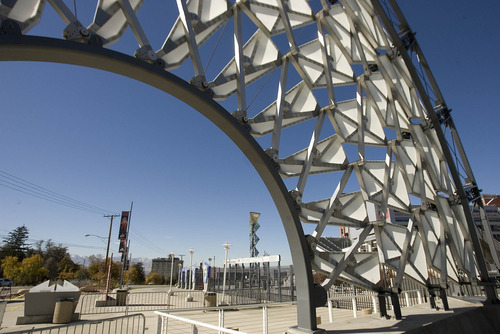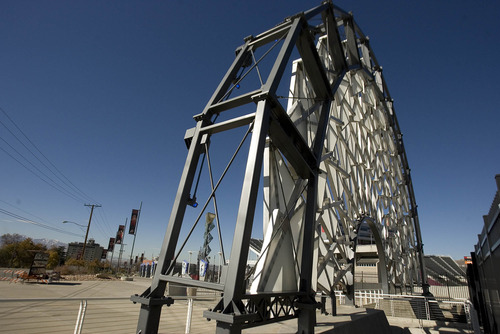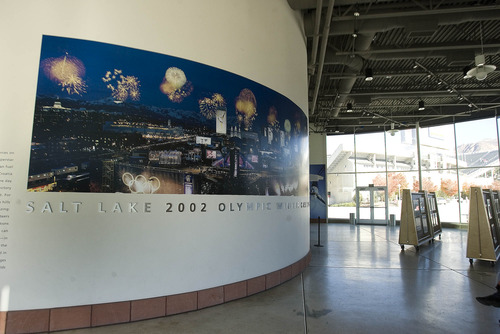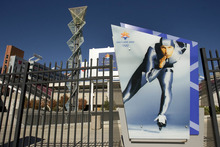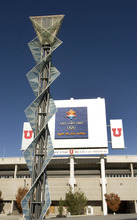This is an archived article that was published on sltrib.com in 2012, and information in the article may be outdated. It is provided only for personal research purposes and may not be reprinted.
The University of Utah's eminent role in the 2002 Winter Games has been embodied for the past decade in Olympic Cauldron Park on Rice-Eccles Stadium's south end.
But thoughts of expanding the stadium since the U. now belongs to the Pac-12 have university officials talking to the Utah Olympic Legacy Foundation about what to do with elements of Cauldron Park if it's displaced by new south-bowl seating.
"We don't currently have a time frame or decision on stadium expansion. The likelihood of an expansion is anyone's guess," said Michael Perez, U. associate vice president of facilities management.
"But knowing that it is a possibility," he added, "we want to do this in ways that benefit the university while being considerate of the value the Olympics brought — and continue to bring — to the University of Utah."
There's little doubt the $2 million cauldron will remain on-site, a symbolic remembrance of the days and nights a decade ago when it burned above the stadium that played host to the Opening and Closing ceremonies of the Olympics and Paralympics.
But Cauldron Park, built with $6.5 million in profits from the Salt Lake Games, also includes other features:
• A visitors center with a theater that shows a stirring movie about the 2002 Games.
• A "park" with a reflecting pool and a V-shaped stone wall bearing the names of 2002 medalists.
• 17 panels hung on the stadium fence that celebrate the highlights of each day of the Olympics.
• The now static Hoberman Arch, which opened and closed when used at the downtown Medals Plaza to introduce each day's medalists.
Colin Hilton, the Utah Olympic Legacy Foundation's executive director, said the U. has always been a good partner to his group, fulfilling terms of a soon-to-expire 10-year contract to occupy the plaza behind the south end zone stands.
"I completely understand the need to help facilitate the move of the U. to the Pac-12 and to utilize the [stadium] space in a good way," Hilton said. "They're looking for a creative way to still honor the Olympics and accommodate those needs."
He expects Cauldron Park's transition to begin with the move of exhibit materials out of the visitors center, adding that those items can be incorporated easily into the artifact collection of the 2002 Games' museum at Utah Olympic Park outside of Park City.
"We were already looking to do a remodel there," Hilton said of the Olympic museum, which shares the Joe Quinney Winter Sports Center with the Alf Engen Ski Museum.
"That's the first phase of the relocation of some Olympic memorabilia," he added. "Other phases will kick in when the stadium expands."
Hilton said the Olympic Legacy Foundation is intent on always "keeping the cauldron there. We'll look to relocate it in a smart way."
That's the U.'s goal as well, said Perez.
"If, in fact, there is a stadium expansion," he added, "our desire is to incorporate elements of the 2002 Olympics and to continue its legacy there at the stadium."
Twitter: @sltribmikeg Olympic Cauldron Park
Olympic medalists Shannon Bahrke (freestyle moguls) and Bill Schuffenhauer (bobsled) helped break ground for the park on Oct. 2, 2002.
The first phase of construction was done, and the cauldron moved to its present location, in time for the February 2003 celebration marking the first anniversary of the Olympic Opening Ceremony.
The visitors center and the rest of the park were dedicated Aug. 22, 2003.





